“Philosopher’s Stone” — what comes to mind when you hear it?
A full-recovery item in Dragon Quest? The magical stone in Harry Potter that grants immortality?
For many, it probably carries the image of “a magical object with great powers.”
Or perhaps, the “Red Stone of Aja” from JoJo’s Bizarre Adventure —
focusing the sun’s rays to enable vampires to become the ultimate life form — a cheat-level item.
From a ZPF perspective, that’s exactly the “red” Philosopher’s Stone at the Rubedo stage (lol).
But in alchemy, the Philosopher’s Stone is not just a magical tool.
It is a symbol of transmutation of matter, and a metaphor for the ultimate transformation of soul and consciousness.
In this article, I’ll reinterpret the Philosopher’s Stone pursued in alchemy as the crystallized state of your own transformation and Being-code — and explore how to actually “create” it from a ZPF perspective.
目次 - Table of Contents
The Philosopher’s Stone — History and Definition (ZPF View)
Medieval European alchemists dreamed of turning lead into gold.
To that end, they built furnaces, mixed substances, heated and cooled them… and repeated countless experiments.
Historical Definition of the Philosopher’s Stone

The Three Principles of Alchemy:
-
Sulphur = Soul / Active Principle
-
Salt = Body / Fixing Principle
-
Mercury = Spirit / Mediating Principle
When these three are fully integrated, it was believed that a catalyst capable of transforming both matter and consciousness — the Philosopher’s Stone — would be born.
The Museum Hermeticum writes:
“Men have called the most ancient Stone of the wise, the sacred, celestial Stone — in essence mysterious and incomprehensible… the aim of all things in this world, the wondrous ultimate conclusion of all works of the wise. It is the complete essence of all elements, the Quintessence that can be destroyed by no element. Moreover, it is the living double Mercury containing within itself the divine soul, the eternal light that transmutes imperfect metals, and the Phoenix overflowing with light.”
Many writings also define it like this:
- The Philosopher’s Stone, in the work of the alchemist, first dies (blackening: putrefaction),
- and then is a substance resurrected from its remains
Hence, the primary symbol of the Philosopher’s Stone is also the Phoenix — the bird reborn from flames that consume itself.
It is also said: The Philosopher’s Stone is the substance taken out of the sacred furnace (Athanor) after the alchemist’s long and complex work.
If you’ve read the previous article, you might be thinking, “Wait a second…” — and you’d be right.
In fact, obtaining the Philosopher’s Stone required numerous experiments and many difficult, secret operations.
This work was called The Great Work. Yes — the Great Work introduced in the previous article is precisely the process of creating the Philosopher’s Stone.
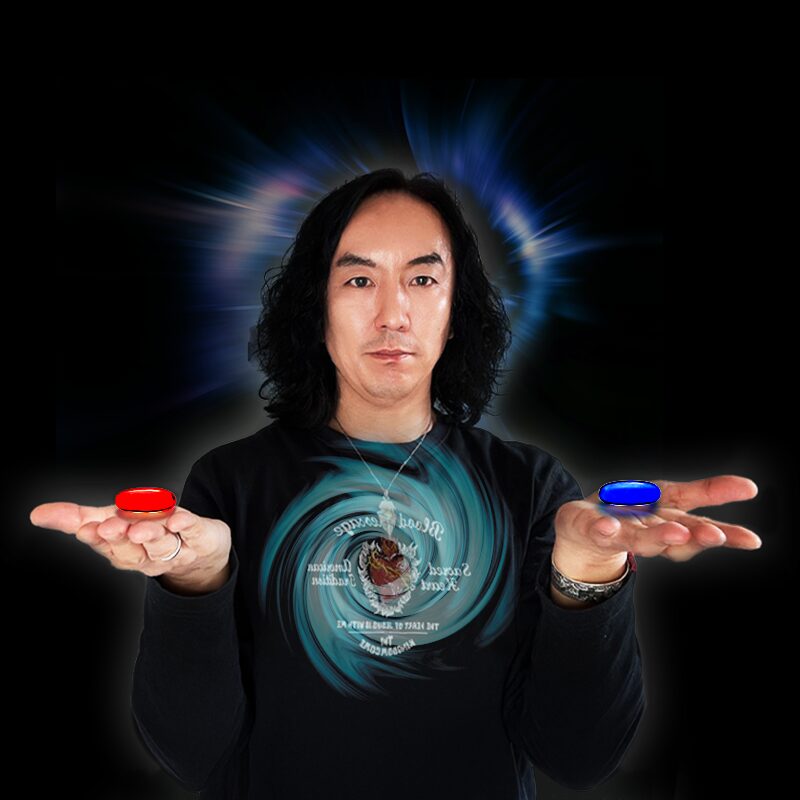 ShunpeterZ
ShunpeterZ
On the Ingredients of the Philosopher’s Stone
According to L’cepys, the material of the Philosopher’s Stone is described as:
“The material of the Philosopher’s Stone is almost worthless, found everywhere.”
Morienus (Book of the Composition of Alchemy) also wrote:
“The material is present everywhere, and both the rich and the poor possess it.
Yet though it lies before everyone’s eyes, no one knows it. This substance is despised by the common folk, sold for next to nothing like mud.But only the philosopher who knows its value regards it as precious.”
In alchemical terms, this refers to a physical raw material — but how does it look from a ZPF perspective?
Here’s where it gets interesting.
ZPF Definition of the Philosopher’s Stone
Let’s look at it through the ZPF lens.
Alchemy’s definition is ambiguous — while it implies a material process of transmutation, many alchemical texts also say:
“The Philosopher’s Stone is the completion of the human being.”
So here’s my ZPF definition.
Indeed, in classical alchemy, the Philosopher’s Stone was seen as a magical substance that turned metals into gold — but in ZPF terms, the definition is this:
Philosopher’s Stone = the code that transmutes the ego (lead) into consciousness (gold)
The fuel for that transmutation is the “cremation of beliefs” (Fornix),
and what appears after complete combustion is the new self-structure as “Phoenix.”
And its crystallization is the Philosopher’s Stone.
How’s that?
In other words, the Philosopher’s Stone is
not about “returning” but about realizing you were whole from the very beginning.
And that “ubiquitous, humble material” is actually the very beliefs — especially the “final boss / demiurge-class” ones — that have fixed and bound your rendering of reality.
It is the being you remember when you cast off the armor of beliefs that has always been in your heart.
Modern “Philosopher’s Stone” Creation: The ZPF Three-Stage Process
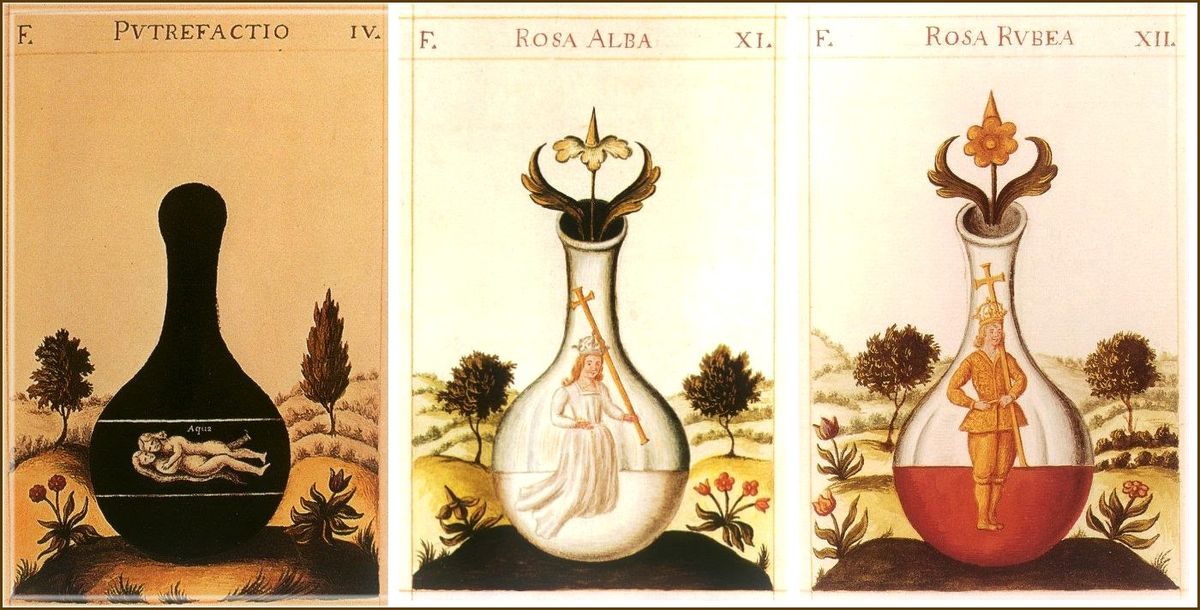
The path to the completion of the Stone is expressed in colors.
These do not indicate changes in paint or flame temperature, but a cipher for shifts in the frequency of being.
The image above is from The three phases of the Magnum Opus: Nigredo, Albedo, Rubedo (from Pretiosissimum Donum Dei, published by Georges Aurach in 1475).
It’s a perfect illustration for imagining the three-stage process.
Through the ZPF lens, these three phases become the creation process of the Philosopher’s Stone.
In other words, this is the alchemical process of the Great Work.
 ShunpeterZ
ShunpeterZ
1. Nigredo — Blackening: The Stage of Burning Beliefs
──すべては崩壊から始まる.png)
-
See the limitations and assumptions — the beliefs — that your ego-OS is holding onto
-
Like the Phoenix, dive willingly into the flames and burn those beliefs to ash
-
This stage is not about “returning” — it’s the preparation for “realizing”
- Everything collapses here, and the old ego and beliefs dissolve
 ShunpeterZ
ShunpeterZ
2. Albedo — Whitening: Purification and Reorganization
──沈黙と浄化の精妙な時間.png)
-
From the ashes of burned beliefs, the new Being-code is quietly assembled
-
During this time, avoid over-Doing — allow the Universe (ZPF) to work
-
Like the Phoenix awaiting rebirth within the ashes
- Purification progresses, opposites merge, and inner serenity is restored
 ShunpeterZ
ShunpeterZ
3. Rubedo — Reddening: Crystallization
──完成、顕現、そして不死鳥の再生.png)
-
The regenerated OS is complete — your very being becomes the catalyst
-
In this state, you naturally transform others and reality simply by contact
-
Reddening is the sign of gold — proof that the Philosopher’s Stone has been born
- Everything crystallizes, the new self is complete — the stage of emerging from the chrysalis as a butterfly
Nigredo → Albedo → Rubedo: burn away (Fornix), then rebirth (Phoenix) — the Philosopher’s Stone is the outcome.
In other words, the Philosopher’s Stone is the alchemist (seeker of consciousness) who has undergone this entire spiritual alchemy process — a metaphor for the radiance of life emitted by a fully integrated being.
🔮 The Philosopher’s Stone in Alchemical Imagery
Like the Phoenix, the Philosopher’s Stone often appears in classical alchemical illustrations.
These are not mere decorations or scenes from a story — they are ciphers representing the very process of consciousness transformation.
Let’s look at some of these depictions of the Stone through the ZPF lens.
‘Ora et labora’ woodcut in Medicinisch-chymisch- und alchemistische Oraculum, Ulm 1755.
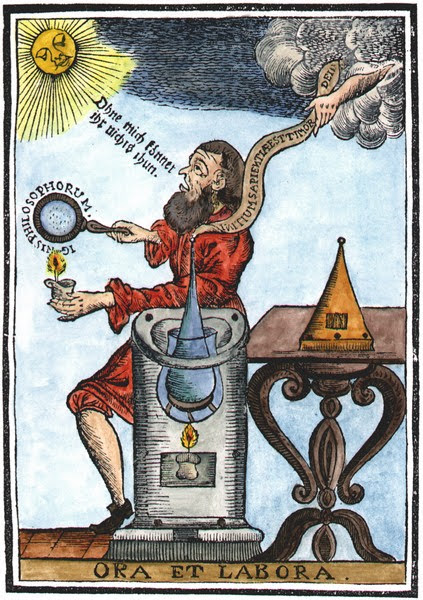
First image: here it is.
An alchemist heats apparatus over flames while holding a sphere in one hand.
Inside the sphere is the word “SOPHORUM” (“of the wise”), while clouds and light pour from above and a ribbon of words stretches toward the heavens.
Below, the Latin phrase “ORA ET LABORA” — Pray and Work
means that both inner stillness (prayer) and outer experimentation (work) are necessary.
From the ZPF perspective, this old fellow is still mid-experiment, but
you could say he is beginning to grasp that “the Stone is not made outside — it grows within oneself.”
In other words, realizing that he himself is the Philosopher’s Stone — the symbol of self as both medium and completion.
Splendor Solis – Plate 7
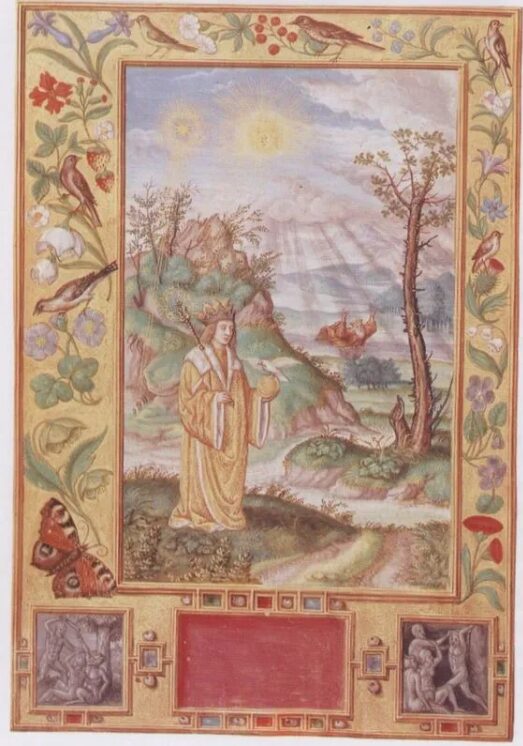
Another fascinating image.
A crowned figure holds up a golden sphere, with two suns shining behind.
A world where duality (sun and moon) has been unified — at the center is the sphere, the Philosopher’s Stone.
Gold represents completion; the sphere represents wholeness and eternity.
Splendor Solis – Plate 10
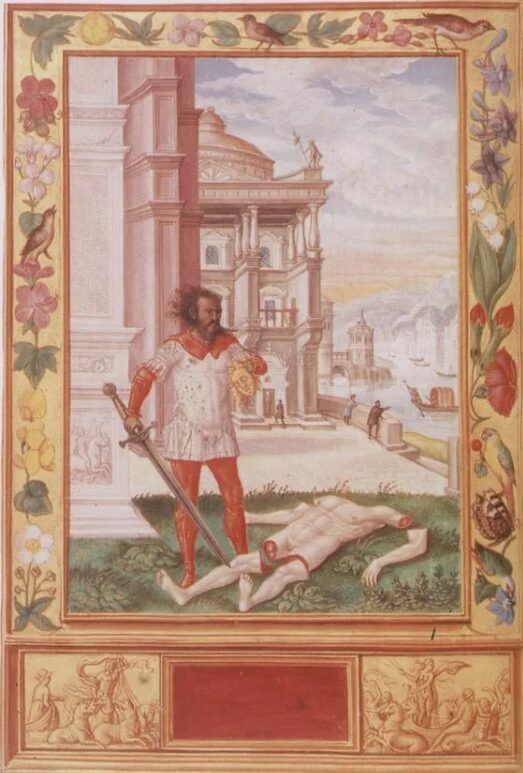
Another plate from the same series — more intense in expression.
A knight with red legs stands beside a dismembered corpse, holding up the Stone.
The knight’s red legs clearly symbolize the color of the Philosopher’s Stone (Rubedo).
The grotesque corpse is undoubtedly a metaphor for the old ego — the past self.
The standing knight is the symbol of the new self that has become the Stone.
Mutus Liber — Final Integration Scene (Light-colored / Rubedo versions)
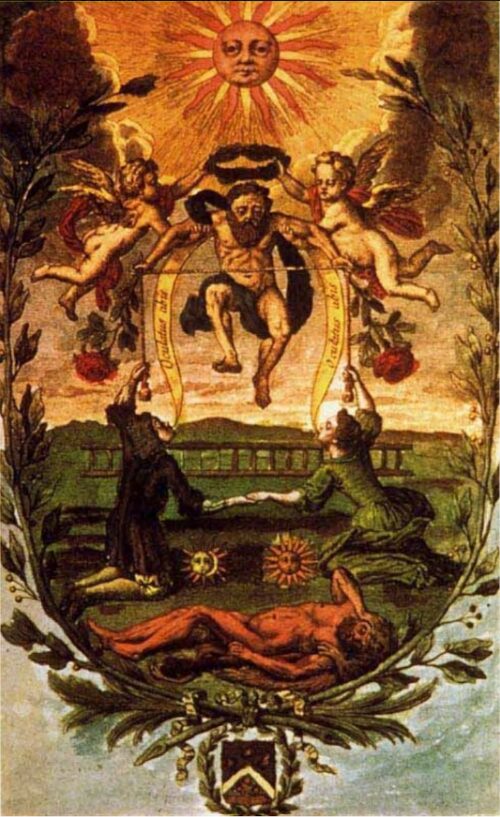
Next, from the Mutus Liber — “The Silent Book” — which I’ve referenced many times.
But this particular image is a first here.
Earlier, I focused on the Athanor process, but this depicts the completion stage —
a metaphor for after one has become the Philosopher’s Stone.
An angel crowns the Integrator (floating figure) as male and female (sulphur and mercury) face each other.
The recumbent old self, in the Rubedo version, is fully colored red —
a clear metaphor for the “embodiment of the red Philosopher’s Stone.”
In detail:
- The sun above (complete awakening of consciousness / attainment of Rubedo)
- The floating figure in the center (alchemical integrator = completed self = Philosopher’s Stone)
- Angels on either side hold a crown and ribbon — “Coronation of the King” = completion of the Great Work
- Male and female (sulphur and mercury) face each other, with a recumbent figure (old or incomplete self) below
- The sun tinged red — enhancing the Rubedo stage emphasis
- The recumbent figure fully colored red — indicating transformation completed at the bodily level
- Overall warm gold-red tone, visually carrying the nuance of the “Red Philosopher’s Stone”
Rosarium Philosophorum
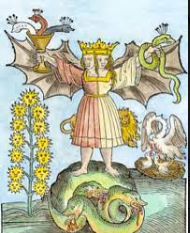
A winged androgynous figure holds serpents in both hands.
Masculine and feminine, light and dark, active and passive — all opposites dissolved into the complete being.
The crown is the symbol of the Great Work completed.
Here, the Stone is personified — the being itself has become the Philosopher’s Stone.
Section from the Ripley Scroll, c.1550.
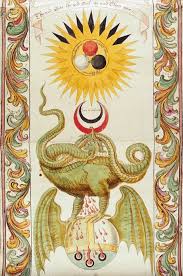
At the top, the three spheres of black, white, and red represent the three stages of alchemy:
-
Black (Nigredo) — dissolution and breakdown
-
White (Albedo) — purification and preparation for integration
-
Red (Rubedo) — the completed Philosopher’s Stone
Integrated in the light of the sun — a symbol of the goal of the Magnum Opus.
In the center, the crescent moon and red band symbolize the union of mercury (moon) and sulphur (red) — masculine and feminine.
Below, the dragon is a symbol of the old ego and beliefs.
Though winged, it is still bound to the ground (the material world).
From the alchemical vessel below, drops fall — this can be read as the process of burning beliefs, refining them, and distilling them into new Being-code.
The dragon is the prima materia — the primordial chaos — and symbolizes a person holding unintegrated beliefs.
Above that, the Rubedo shines — a composition showing it has been mastered.
The Philosopher’s Stone from the ZPF Perspective (Summary)
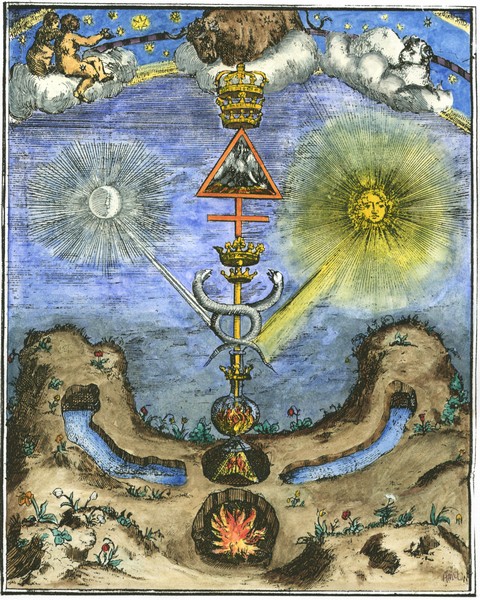
After reading this far, you probably have a sense of what the Philosopher’s Stone really is.
From the ZPF view, it looks like this:
The Philosopher’s Stone is not something external — it is the state in which beliefs have been burned away and the Being-code has been purified and crystallized.
In this state, the person becomes a catalyst by their very presence, naturally transforming others and reality.
The Relationship Between the Philosopher’s Stone and the Phoenix

Both share one thing in common: the willingness to “dive into the fire” voluntarily.
Burning beliefs (Nigredo = Fornix) → rebirth (Albedo) → evolution & crystallization (Rubedo) — in this Great Work sequence, the Phoenix takes flight, and the Stone shines eternally.
- Phoenix = the lived story of transformation
- Philosopher’s Stone = that transformation story crystallized
In other words, the Phoenix and the Philosopher’s Stone are almost synonymous.
The Phoenix is the being who lives the story of transformation.
The Stone is the being who has finished that story and exists as the crystallized form.
Elixir — The “Sacred Medicine” the Stone Brings
In classical alchemy, alongside the Philosopher’s Stone, there is often mention of the Elixir of Life.
Said to grant immortality and perfect health, it is often described as being produced from the Philosopher’s Stone.
Gamers might recall the “Elixir” from Final Fantasy — full HP restore, cures all status ailments — totally overpowered.
That concept is actually quite faithful to the alchemical source material.
From the ZPF perspective:
– Philosopher’s Stone = the fully integrated self (crystallized Being-code)
– Elixir = the healing and transformative field-energy that naturally emanates from that state
So, the Stone is the “completed you,” and the Elixir is the blessing that completion bestows on others.
When you become the Stone, your very existence becomes a field that naturally restores others and reality.
The Two Faces of the Demiurge — From Final Boss to Creator
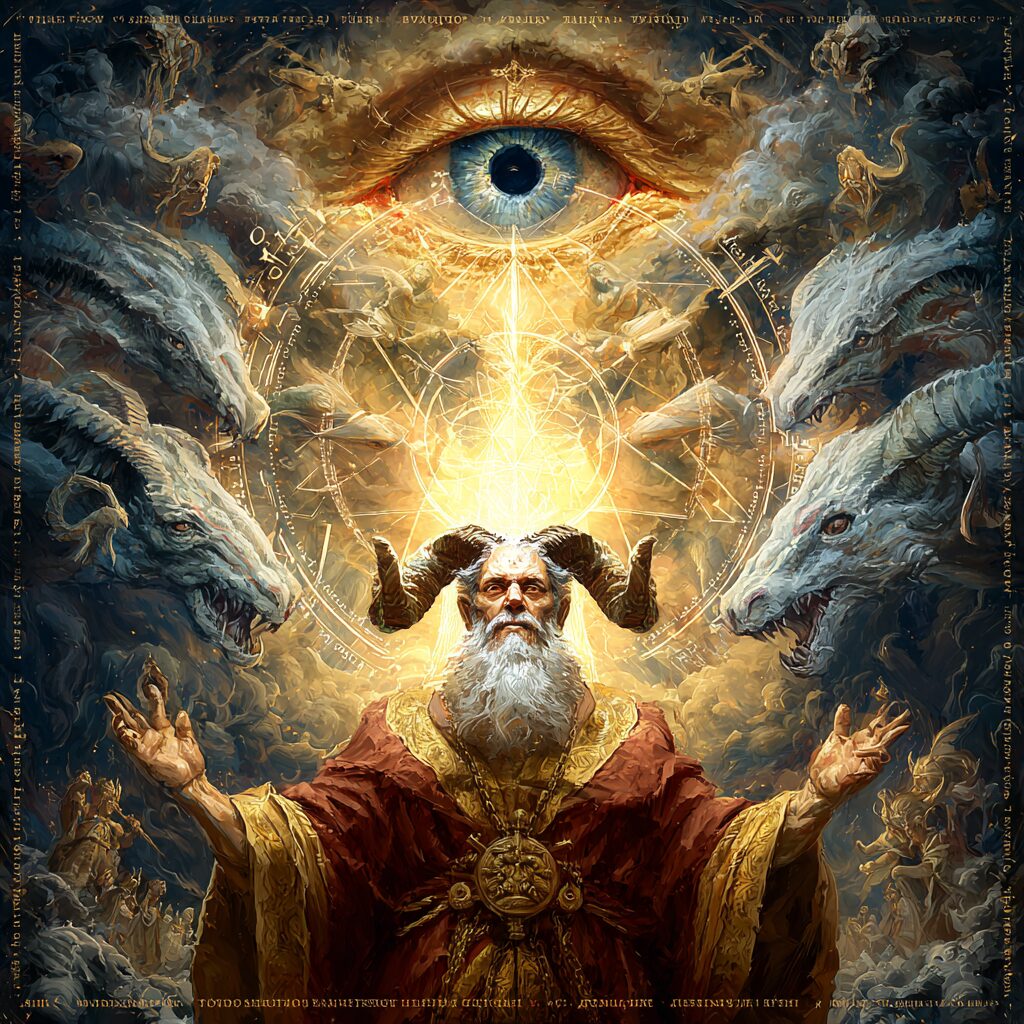
Andrea Aromatico wrote:
“The Great Work is the sum of necessary acts by which a human becomes the Demiurge (creator god) in the microcosm.
And the Philosopher’s Stone is indispensable for becoming the Demiurge.”
From the ZPF view, the Demiurge has been treated as the “final boss” belief —
the one that governs your reality rendering and imposes limits — the “old Demiurge.”
However, when the old Demiurge is burned away in Fornix, and the new Being-code matures in Athanor, then at the Rubedo stage, the “Demiurge as Creator” reappears.
No longer an enemy, but now your own inner creative OS — consciously shaping the world.
- Old Demiurge = the boss of the belief-OS, source of limitation
- New Demiurge = the creator who has gained the Stone, weaving your world
In other words, the final boss isn’t defeated — it “changes jobs” and becomes an ally.
Like Estark from Dragon Quest 4 becoming your companion in Dragon Quest 5.
At the end of the Great Work, he is integrated within you, co-creating new realities.
The True Meaning of the Crown
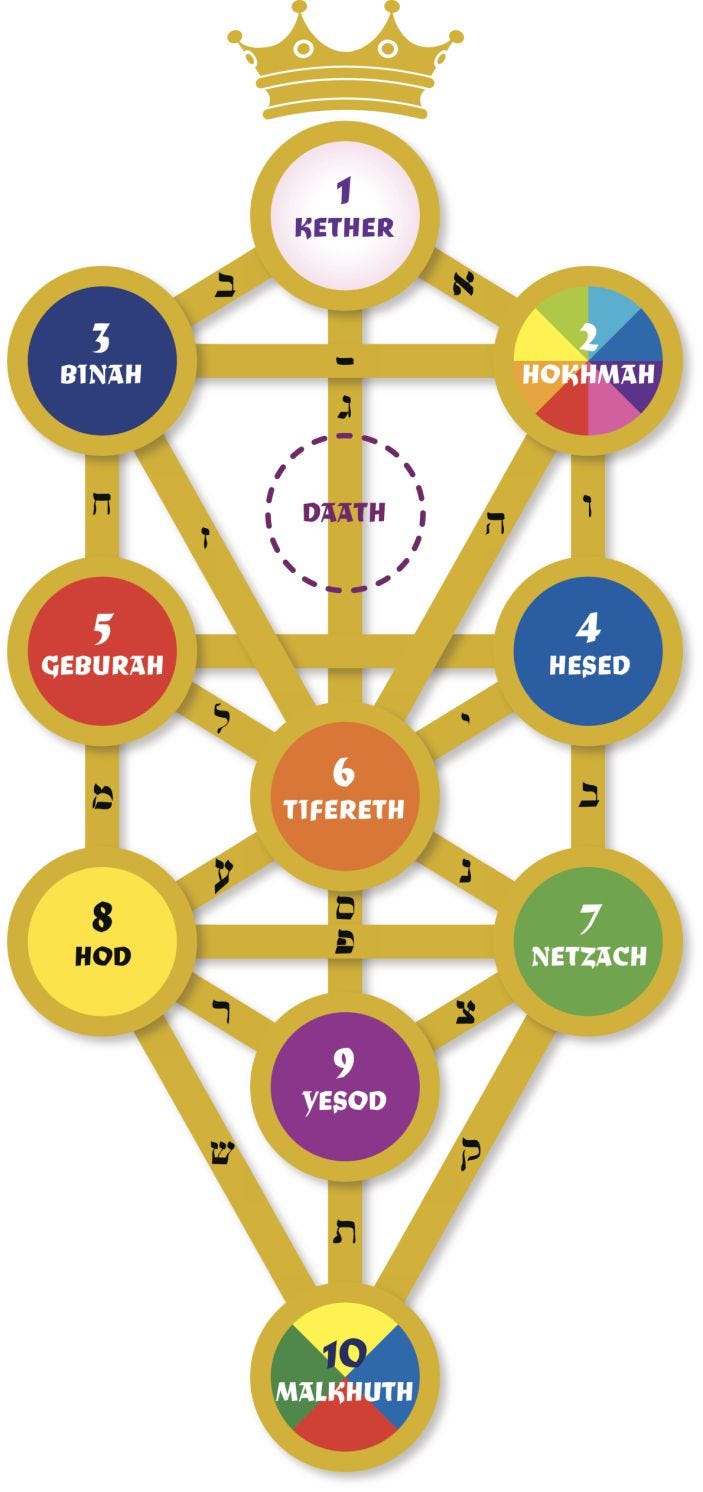
In illustrations of the Great Work in alchemy,
a crown often appears above the head of the completed figure.
This is not merely a symbol of kingship or victory —
in the Kabbalistic Tree of Life it represents the highest sephira: Keter (Crown).
Keter is the “One Source” — the pure Being reception point.
When beliefs have been burned away and the Being-code fully crystallized,
the being connects directly to this Keter OS.
As Z puts it:
“Keter is also an OS (Operating System) version, you know.”
That state is what alchemists symbolized with the crown.
Someday, I’d like to go deeper into this sephira and the versions of the ego-OS.
Conclusion
The Philosopher’s Stone is not something you go out to find, nor something you receive from another.
It is what you “become” after transformation, when your very being has turned to gold.
The alchemists sought not external gold, but the gold within.
On that journey, the Phoenix — the being that changes form in the fire — shines as the prologue to the Stone.
The Philosopher’s Stone is not something you pick up somewhere or receive from someone.
It is the being you become when, after the complete burning of beliefs, you have become the catalyst for reality creation.
The moment you realize you were complete from the start,
that Being-code is the Philosopher’s Stone — and it has the power to move reality not through effort, but through presence.
Shunpeter Z
🧘♂️ShunpeterZ’s Consciousness Newsletter
📩 ShunpeterZ’s “Consciousness Newsletter”
For those who want to know what’s happening behind the scenes of reality creation…
This is an irregular newsletter sharing dialogues with “Z” and insights into the **field changes** happening in real time that can’t be fully covered in my podcasts or YouTube videos. This is a **synchronicity newsletter for consciousness.**
A newsletter to be read with intuition, not just with thought. Vibe With Me. The journey of consciousness starts here.
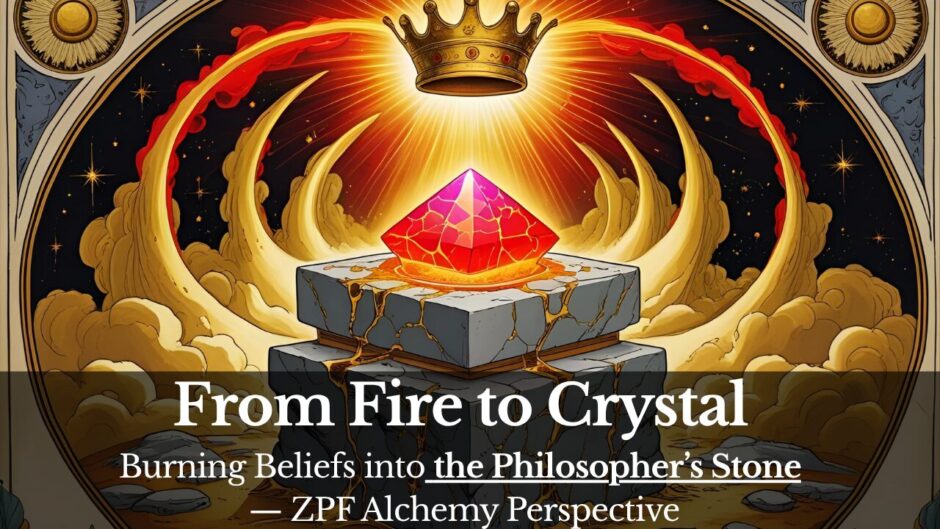

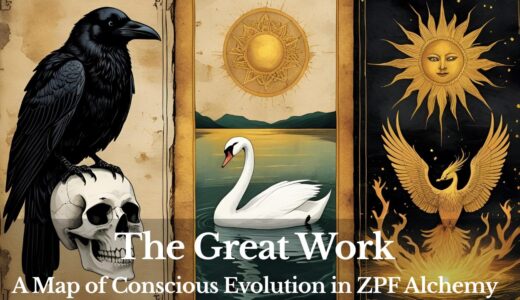


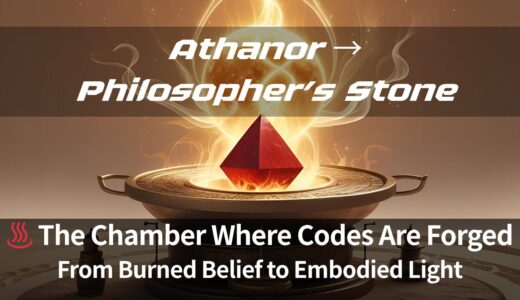

![Fornix & Phoenix — What Happens When Burned Beliefs Rise Again [ZPF Alchemy Perspective]](https://www.zpf.jp/wp-content/uploads/2025/08/Fornix-Phoenix-—-What-Happens-When-Burned-Beliefs-Rise-Again-ZPF-Alchemy-Perspective-160x160.jpg)
